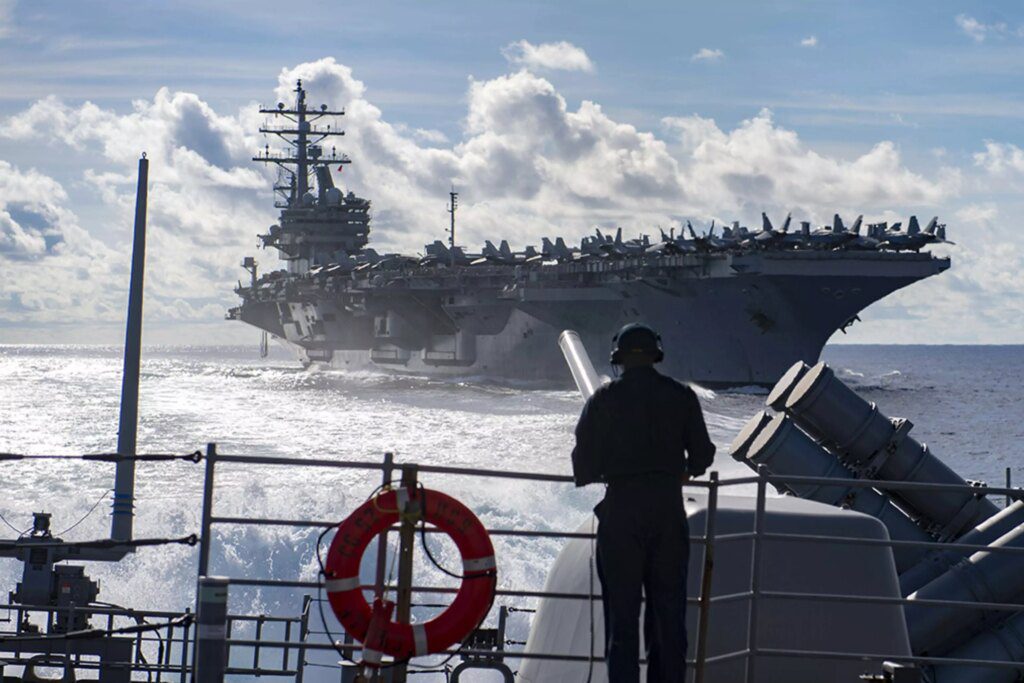Naval Strategies that Transformed History: Domination on the High Seas explores the significant role played by naval strategies in shaping history. The article highlights four notable examples: the Athenian Naval Strategy in 5th century BC Greece, the English victory over the Spanish Armada in 1588, the Mahanian Strategy in the 19th century, and the Battle of Midway during World War II. These examples showcase how naval strategies have allowed nations to expand their territories, protect their interests, and establish dominance over rival powers. By understanding the impact of naval strategies, we gain insight into the transformation of history on the high seas.
Naval Strategies that Transformed History: Domination on the High Seas
Introduction
The dominance of a nation on the high seas has played a crucial role throughout history. From ancient times to the modern era, naval strategies have transformed the course of history by enabling nations to expand their territories, protect their interests, and establish dominance over rival powers. This article delves into some of the most notable naval strategies that have shaped history.
1. The Athenian Naval Strategy (5th century BC)
During the 5th century BC, ancient Athens had established itself as a major naval power. Under the leadership of Themistocles, the Athenians developed a revolutionary naval strategy that would prove pivotal in their wars against the mighty Persian Empire. They built a formidable fleet of triremes, sleek and maneuverable warships powered by three banks of oars. The Athenian naval strategy emphasized nimble operations and quick strikes, leveraging their superior naval technology to overcome the larger Persian forces. This strategy culminated in the famous Battle of Salamis in 480 BC, where the Athenian fleet destroyed much of the Persian navy, simultaneously saving Greece from Persian domination and securing the dominance of Athens as a naval power in the region.
2. The Spanish Armada (1588)
The Spanish Armada, launched by Philip II of Spain, was intended to invade England and overthrow Queen Elizabeth I. It consisted of 130 ships, including galleons, battleships, and supply vessels. Despite its numerical advantage, the Spanish Armada failed to achieve its objectives due to the innovative naval strategy implemented by the English. Led by Sir Francis Drake and Charles Howard, the English launched a series of fire ship attacks, where they set ablaze eight unmanned ships and sent them towards the tightly packed Spanish fleet. This disrupted the formation of the Armada and forced them to scatter. The superior maneuverability of the English ships, combined with adverse weather conditions, further weakened the Armada, enabling the English navy to dismantle and defeat it. This victory marked the ascendancy of the English navy and the establishment of England as the dominant naval power in Europe.
3. The Mahanian Strategy (19th century)
Developed by renowned naval strategist Alfred Thayer Mahan, the Mahanian strategy emphasized the significance of a powerful navy in securing global supremacy. Mahan argued that a nation’s economic and military strength relied on controlling vital sea routes and ensuring the dominance of its navy. This theory greatly influenced various naval doctrines during the late 19th and early 20th centuries. In particular, it shaped the strategies of major powers like the United States, Germany, and Japan, leading to naval races and ultimately playing a significant role in triggering World War I. The Mahanian strategy continues to be relevant today, with controlling sea routes and maintaining a powerful navy remaining crucial elements in global geopolitics.
4. The Battle of Midway (1942)
The Battle of Midway, a pivotal naval battle of World War II, showcased the effectiveness of strategic planning and intelligence in naval warfare. The United States, having cracked the Japanese communication codes, was able to anticipate Japan’s intentions to attack the Midway Atoll. Admiral Chester W. Nimitz, the commander of the U.S. Pacific Fleet, devised a brilliant strategy to lure and ambush the Japanese navy. By concentrating their forces and launching a surprise airstrike from aircraft carriers, the U.S. fleet inflicted significant damage on the Japanese navy, sinking four of their aircraft carriers. This victory turned the tide of the Pacific War and marked the decline of Japan’s naval power.
Conclusion
Naval strategies have played a crucial role in shaping the course of history, enabling nations to assert their dominance, protect their interests, and secure victory in conflicts. From the Athenian naval strategy of the ancient world to the decisive battles of World War II, naval superiority has been a determining factor in key historical events. Understanding the significance of naval strategies and their impacts on global geopolitics provides fascinating insights into the transformation of history on the high seas.
